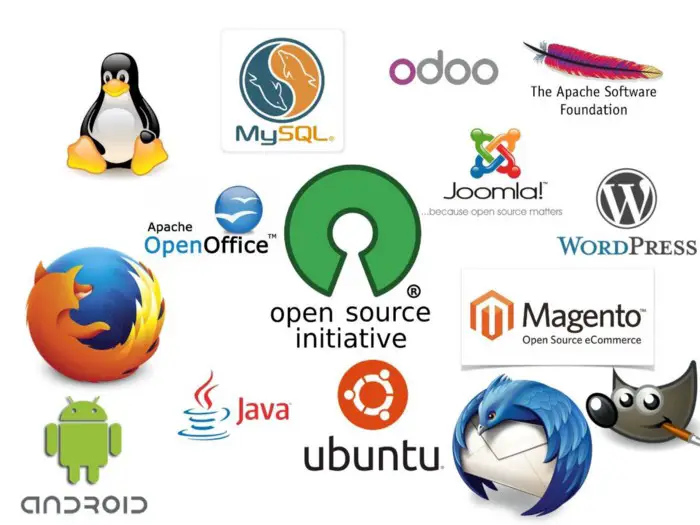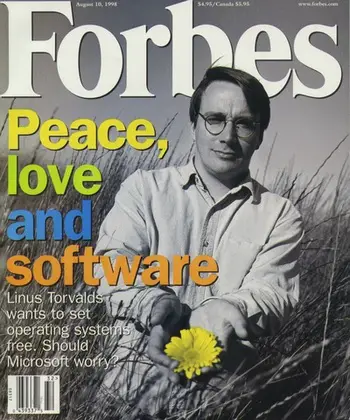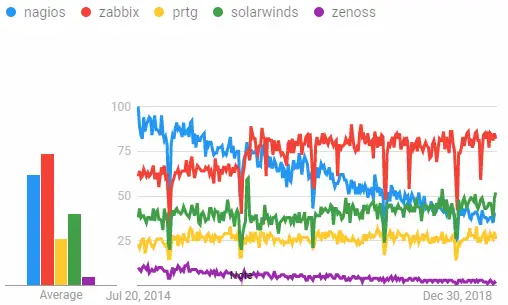The history of open source software is quite fascinating, a tale of great geeks who fight for freedom! Not like William Wallace but close. Let’s find out together how did it all begin and what future holds for open-source software!
Even old-folks – who use a computer only for playing solitaire game – know for Windows vs. Linux war. The Linux creator, Linus Torvalds, once said, “If Microsoft ever does applications for Linux it means I’ve won”. Today, not only does Microsoft makes applications for Linux, but they are developing Windows using version control system called Git . And guess who created the Git? Yes, you are correct: Linus Torvalds. What an irony! A lifelong celebration for Torvalds’ ego.

If you happen to stumble on this article by accident and you never heard for the term “open-source” – it’s time for a boring definition: “Open source refers to a program in which the source code is available to the general public for use and/or modification from its original design free of charge”
Today, all companies use open-source software in some form. Chances are that you are using some kind of open-source software like Firefox, VLC media player, Notepad ++, OpenOffice, WordPress, Ubuntu (Linux) and similar.
When an average user sees these applications, his first thought is likely to be: “Free! Free! Free!”. The term open-source has indeed become a synonym for free. We will not fool ourselves, because at the end of the day we always look at how to save our hard-earned money. But believe it or not, there are some “fanatics” who say that open-source is much more than that. That open-source means freedom. That open-source is the future. And some even say that it’s the only way of living!
Let’s make blitzkrieg through the history of open source software and try to find out what future awaits!
To do that we must go back to the ’80s of the last century to meet our “fanatic” number 1.
Imagine a large room for printers at the MIT University where the bearded programmer is going berserk. He is unsuccessfully trying to install a new laser printer while in his mind printer manufacturers are laughing like typical movie villains.

That bearded man is Richard Stallman. He is mad because he got closed proprietary software that can not be expanded with custom functionality. Before, he could easily change the code because the software was open-source – readable to people. But now he can do nothing, the code was hidden from him and all his attempts to get the open code were rejected. Villains are not just laughing, now they are dancing to the new hit song “Another One Bites the Dust”.
Do you know how sometimes a little thing in life starts a sequence of big events? Well, this unpleasant experience has convinced Stallman that every person must be able to modify the software they use. He believed that the intellectual property that companies apply to software harms society and slows innovation.
An ordinary man would forget about this “printer incident” and would continue with his life but Richard Stallman is all but an ordinary man.
Stallman announces that hi is starting a new operating system that will be compatible with the existing commercial Unix system and will consist entirely of free software. He called it GNU operating system (GNU’s Not Unix!).
In parallel, he launches the Free Software Foundation, which will be a legal infrastructure and support for the new open-source software movement.
Most importantly, he defines the GNU GPL (General Public License) that contains the copyleft component (opposit of copyright). Copyleft, in essence, means – if I give you some software with the complete freedom to modify and share then you also have to guarantee that same freedom for that software and any other software that originated from the source code.
The GPL license is so well defined that it has become a concern for large corporations. If someone mistakenly copies the code from a software that is protected by GPL license to commercial software then that software must become free and publicly available to everyone (e.g Microsoft admits its GPL violation).
The GNU operating system was developed at a relatively fast pace, and by the end of the 1980s many free software and tools were created, but unfortunately it still did not have a fully functional kernel. Stallman and community were trying to solve tones of bugs because they have chosen a too complex micro-kernel architecture that never worked as they intended.
Now imagine the orchestral music announcing the arrival of our “fanatic” number 2.
In 1991, on the other side of Atlantic ocean, frustrated by the slow progress of the GNU operating system, a 21-year-old Linus Torvalds decided to make a free operating system using the Minix operating system base (the commercial version of Unix that was used for educational purposes). And he did it! He called it Linux and published his work on the Internet where he wrote, among other things:
“Hello everybody out there using Minix – I’m doing a (free) operating system (just a hobby, will not be big and professional like gnu) … “
It turned out that not only Torvalds was frustrated by the wait for the new free operating system. Hundreds of other programmers joined the Linux project. After the foundation was established, all came to build a skyscraper.
Inspired by Richard Stallman’s talk about free software, Torvalds announces Linux with the GNU GPL license. Soon after, the GNU community jumps on board and starts migrating GNU software to Linux.
Linux becomes an unstoppable force.
Even at the very beginning, Linux was more stable than any other operating systems at that time. It didn’t take much time before companies started using Linux as their primary operating system for servers because it is well known that stable systems reduce the risk of losing money, the company’s reputation and users.
Since open-source software was free, companies were no longer “locked” for one vendor. Now they had the freedom to choose from whom to buy a product, from whom service and from whom support.

Many companies made fortune by selling support for open-source software. One of those companies is Redhat. Linux has provided them millions, and in return, they donated millions to the Linux creator. Guess who ends up on the cover of Forbes Magazine soon after? Our humble hero who sad for his Linux “Just a hobby, will not be big and professional like gnu”.
The open-source community grew at a lightning speed. Everyone wondered how this “anarchy” could work? Every day, thousands of programmers are typing on keyboards and creating extremely high-quality software for free! Of course, it was not all that fine and dandy. Every democracy implies freedom of disagreement. Developers can have conflicting opinions about the direction in which the project should be heading. It that case “rebel developers” can copy current project and continue to develop software in their way – this is usually referred to as “Fork” (i.e Nagios Vs. Icinga: the real story of one of the most heated forks in free software).
Today the Internet would be completely different if the open-source movement didn’t start. The Internet expanded quickly because most of the websites ware powered by open-source software (Linux, Apache, PHP, MySql, WordPress). Thanks to the open-source software, Facebook was able to scale its infrastructure and destroy the competition (MySpace was using Windows).
Probably I’m starting to sound like a boring professor so I’ll stop. Also, it is impossible to fit a complete history of the open-source movement in one blog article.
It’s enough to say that Linux is the most popular operating system in the business world today (for servers, not personal computers). All supercomputers use Linux. More than 80% of smartphones use Android that is essentially Linux. Also, the latest technologies such as the Cloud, Internet of Things, Software-Defined Networking are primarily using open-source software.
Finally, we come to the key question – what is the future of open-source software?
Before I answer that question it is important that you know how money is made from completely free software. An individual or company publishes on the Internet the basic version of some software as open-source. If the project is interesting and promising, developers from around the globe will help in developing software because they have some benefit from it: hobby, self-promotion, curiosity, the challenge, they need that software, etc.
After some time, most projects will fail, some will be useful, but will not become popular. While some will be popular and useful, but will not have the potential to make money. And for some, everything will click and they will become globally known.
Successful open-source software is often too complex to use, so many companies offer deployment, maintenance, and training services for such software and thus earn money.
As competition grows, to stand out amongst the competition, some companies develop plugins/modules for the existing open-source software which are sold as commercial software. Who would say that free software will indirectly create a commercial?
As you can see it’s not all black and white. It is not possible to answer the question about the future of open-source software with yes or no. I want to believe that we will ultimately have a utopia where everything will be free, including software, but history teaches us that commerce will probably always exist in some form.
Case-study for discussion
This site is all about monitoring tools so let us compare the popularity of some of the best monitoring tools (Nagios, Zabbix, Zenoss, PRTG, and SolarWinds). Pay attention to Zabbix software that is 100% free and open-source and others that are commercial or have combined license: open-source for core software and commercial one for the enterprise edition.

Zabbix is a great monitoring tool as well as a company that develops it, but I wonder – would Zabbix be so popular if it was not pushing “100% open-source” philosophy from the beginning?
What do you think? Comment below or browse my posts to learn more about Zabbix.


Thanks for sharing this article!!